-
 Bitcoin
Bitcoin $118000
0.67% -
 Ethereum
Ethereum $3750
0.71% -
 XRP
XRP $3.183
1.61% -
 Tether USDt
Tether USDt $1.000
-0.01% -
 BNB
BNB $788.1
1.21% -
 Solana
Solana $186.0
0.85% -
 USDC
USDC $0.9999
-0.02% -
 Dogecoin
Dogecoin $0.2373
1.25% -
 TRON
TRON $0.3204
1.76% -
 Cardano
Cardano $0.8266
1.85% -
 Hyperliquid
Hyperliquid $44.04
1.28% -
 Sui
Sui $4.192
5.88% -
 Stellar
Stellar $0.4399
2.63% -
 Chainlink
Chainlink $18.40
1.19% -
 Hedera
Hedera $0.2842
9.06% -
 Bitcoin Cash
Bitcoin Cash $560.5
2.46% -
 Avalanche
Avalanche $24.99
4.58% -
 Litecoin
Litecoin $114.5
1.25% -
 UNUS SED LEO
UNUS SED LEO $8.980
-0.03% -
 Shiba Inu
Shiba Inu $0.00001406
0.53% -
 Toncoin
Toncoin $3.306
4.27% -
 Ethena USDe
Ethena USDe $1.001
0.03% -
 Polkadot
Polkadot $4.169
2.37% -
 Uniswap
Uniswap $10.56
1.95% -
 Monero
Monero $322.8
1.06% -
 Dai
Dai $0.0000
0.00% -
 Bitget Token
Bitget Token $4.545
0.12% -
 Pepe
Pepe $0.00001261
1.29% -
 Aave
Aave $296.5
1.27% -
 Cronos
Cronos $0.1379
5.90%
The appearance of the evening star will definitely fall? Verification of the three top candlestick patterns
The evening star, shooting star, and bearish engulfing patterns signal potential bearish reversals, but their reliability varies and should be confirmed with other indicators.
Jun 09, 2025 at 09:00 am
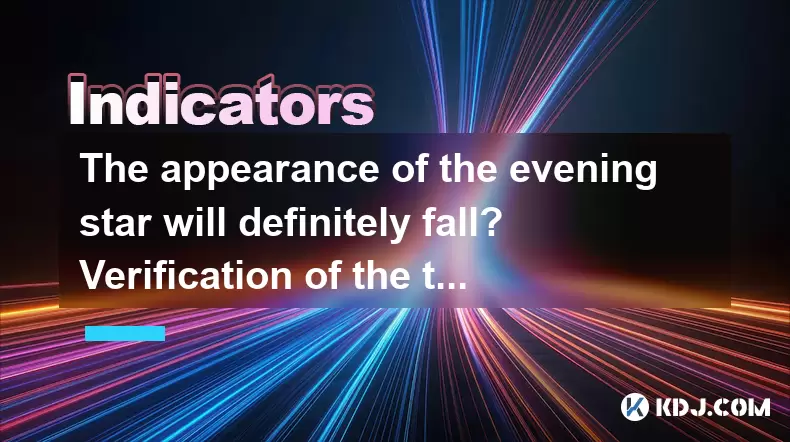
The appearance of the evening star pattern in candlestick charting is often viewed as a bearish reversal signal, suggesting that a bullish trend may be coming to an end. However, the notion that its appearance will definitely lead to a price fall requires careful scrutiny. This article delves into the evening star pattern, alongside other prominent top candlestick patterns such as the shooting star and bearish engulfing, to verify their reliability in predicting price declines.
Understanding the Evening Star Pattern
The evening star is a three-candlestick pattern that typically appears at the top of an uptrend, signaling a potential bearish reversal. It consists of a large bullish candle, followed by a small-bodied candle (which can be bullish or bearish) that gaps above the first candle, and finally a large bearish candle that closes well into the body of the first candle.
- First Candle: A large bullish candle that continues the existing uptrend.
- Second Candle: A small-bodied candle that gaps up from the first candle, showing indecision.
- Third Candle: A large bearish candle that closes at least halfway down the body of the first candle, confirming the reversal.
While the evening star pattern is a strong bearish signal, its reliability depends on several factors including the strength of the preceding trend, the volume accompanying the pattern, and the confirmation of the reversal with subsequent price action.
Analyzing the Shooting Star Pattern
The shooting star is another bearish reversal pattern that appears at the top of an uptrend. It is characterized by a small body at the lower end of the candle and a long upper shadow, indicating that buyers pushed the price up but sellers eventually took control and drove the price back down.
- Small Body: Located at the lower end of the trading range.
- Long Upper Shadow: At least twice the length of the body.
- Little or No Lower Shadow: Emphasizing the rejection of higher prices.
The shooting star suggests that the bullish momentum is weakening, and a potential reversal may be imminent. However, traders often wait for confirmation in the form of a bearish candle following the shooting star before taking action.
Exploring the Bearish Engulfing Pattern
The bearish engulfing pattern is a two-candlestick pattern that also signals a potential bearish reversal. It occurs when a small bullish candle is followed by a large bearish candle that completely engulfs the body of the previous candle.
- First Candle: A small bullish candle within an uptrend.
- Second Candle: A large bearish candle that opens above the high of the first candle and closes below the low of the first candle.
This pattern indicates a strong shift in market sentiment from bullish to bearish. Similar to other patterns, the bearish engulfing pattern's effectiveness is enhanced when it is accompanied by high trading volume and followed by further bearish price action.
Verifying the Reliability of These Patterns
To verify the reliability of these top candlestick patterns in predicting price falls, it is essential to consider historical data and statistical analysis. Numerous studies have been conducted to assess the effectiveness of these patterns, often yielding mixed results.
- Historical Data: By examining past instances of these patterns in various markets, researchers can calculate the probability of a price decline following their appearance.
- Statistical Analysis: Techniques such as backtesting and regression analysis can help quantify the strength of these patterns as predictors of price movements.
While these patterns can be useful tools for traders, their reliability is not absolute. Factors such as market conditions, asset volatility, and trader sentiment can influence their effectiveness. Therefore, it is crucial for traders to use these patterns in conjunction with other technical indicators and fundamental analysis.
Practical Application in Trading
When applying these candlestick patterns in trading, it is important to follow a systematic approach to increase the likelihood of successful trades. Here are some practical steps traders can take:
- Identify the Pattern: Use charting software to scan for the evening star, shooting star, and bearish engulfing patterns in real-time.
- Confirm the Pattern: Look for additional bearish signals such as bearish divergence in momentum indicators or a break below a key support level.
- Assess the Context: Consider the strength of the preceding trend, the volume accompanying the pattern, and the overall market sentiment.
- Set Entry and Exit Points: Determine entry points based on the confirmation of the pattern and set stop-loss orders to manage risk. Plan exit points to lock in profits once the price moves in the anticipated direction.
Risk Management and Pattern Limitations
While these patterns can be powerful tools, they are not foolproof. Traders must practice effective risk management to mitigate potential losses. This includes setting appropriate stop-loss levels, diversifying their portfolio, and not over-relying on any single indicator or pattern.
- Stop-Loss Orders: Place stop-loss orders just above the high of the pattern to limit potential losses if the price moves against the anticipated direction.
- Position Sizing: Adjust the size of positions based on the trader's risk tolerance and the confidence level in the pattern's prediction.
- Diversification: Spread risk across different assets and strategies to avoid overexposure to any single trade.
Additionally, it is important to recognize the limitations of these patterns. They are more effective in certain market conditions and may not perform as well in highly volatile or choppy markets. Traders should also be aware of false signals and the potential for price manipulation in thinly traded markets.
Frequently Asked Questions
Q: Can the evening star pattern be used in any market?
A: The evening star pattern can be applied to various financial markets, including stocks, forex, and cryptocurrencies. However, its effectiveness may vary depending on the specific market conditions and the asset's volatility.
Q: How important is volume when confirming these patterns?
A: Volume is a crucial factor in confirming the reliability of these patterns. Higher volume during the formation of the pattern, especially on the bearish candle, increases the likelihood of a successful reversal.
Q: Are these patterns more effective in certain time frames?
A: These patterns can be identified across different time frames, from intraday charts to weekly charts. However, they tend to be more reliable on longer time frames, such as daily or weekly charts, where the patterns are less susceptible to short-term market noise.
Q: Can these patterns be used in conjunction with other technical indicators?
A: Yes, combining these candlestick patterns with other technical indicators, such as moving averages, RSI, and MACD, can enhance their effectiveness and provide a more comprehensive view of market conditions.
Disclaimer:info@kdj.com
The information provided is not trading advice. kdj.com does not assume any responsibility for any investments made based on the information provided in this article. Cryptocurrencies are highly volatile and it is highly recommended that you invest with caution after thorough research!
If you believe that the content used on this website infringes your copyright, please contact us immediately (info@kdj.com) and we will delete it promptly.
- Solana, Staking, and Unilabs: What's the Buzz in the Crypto Space?
- 2025-07-27 16:50:13
- Altcoins with 1000x Potential: Riding the Bull Run Wave
- 2025-07-27 16:30:12
- AI, Crypto Coins, and E-Commerce: A New York State of Mind on the Future of Digital Transactions
- 2025-07-27 16:30:12
- Quantum Leap: How Bitcoin, Quantum Solutions, and $350M Are Shaking Up Corporate Finance
- 2025-07-27 14:30:12
- Arctic Pablo Coin: Your Icy Treasure Hunt for Mega Returns and Investment?
- 2025-07-27 15:10:12
- Meme Coins in 2025: Investment Strategies & Crypto Trends
- 2025-07-27 14:30:12
Related knowledge
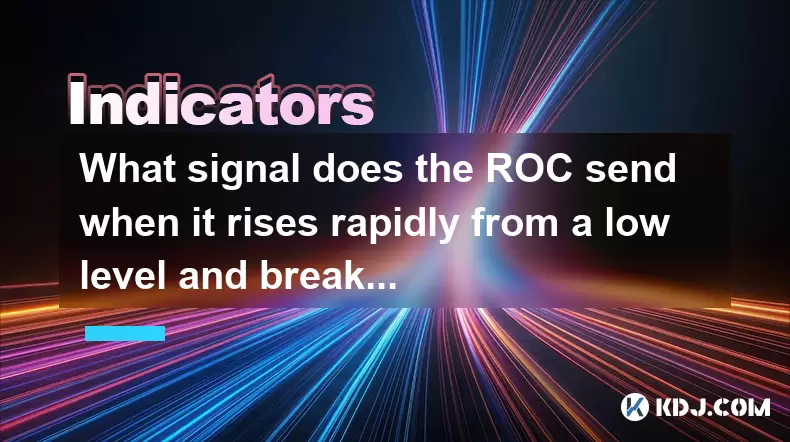
What signal does the ROC send when it rises rapidly from a low level and breaks through the zero axis?
Jul 27,2025 at 10:15am
Understanding the Rate of Change (ROC) IndicatorThe Rate of Change (ROC) is a momentum-based oscillator used in technical analysis to measure the perc...
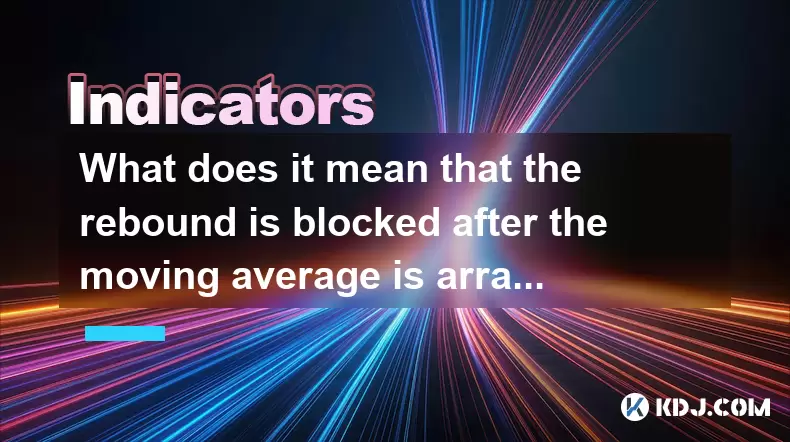
What does it mean that the rebound is blocked after the moving average is arranged in a short position for the first time?
Jul 26,2025 at 10:51am
Understanding the Short-Term Moving Average ConfigurationWhen traders refer to a 'short position arrangement' in moving averages, they are describing ...
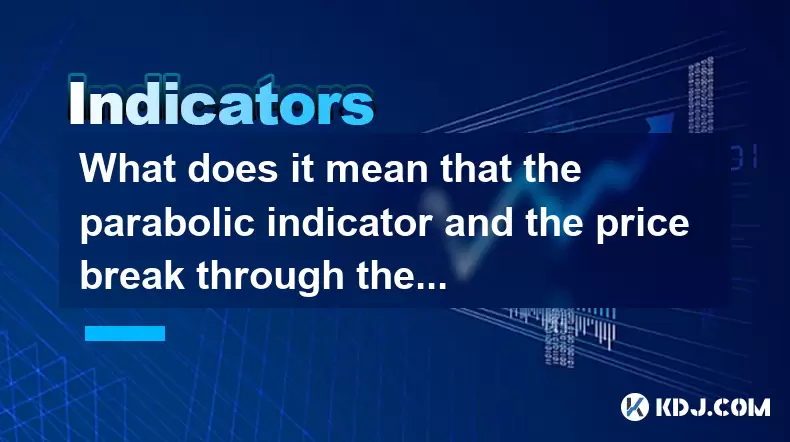
What does it mean that the parabolic indicator and the price break through the previous high at the same time?
Jul 26,2025 at 07:22pm
Understanding the Parabolic Indicator (SAR)The Parabolic SAR (Stop and Reverse) is a technical analysis tool developed by J. Welles Wilder to identify...
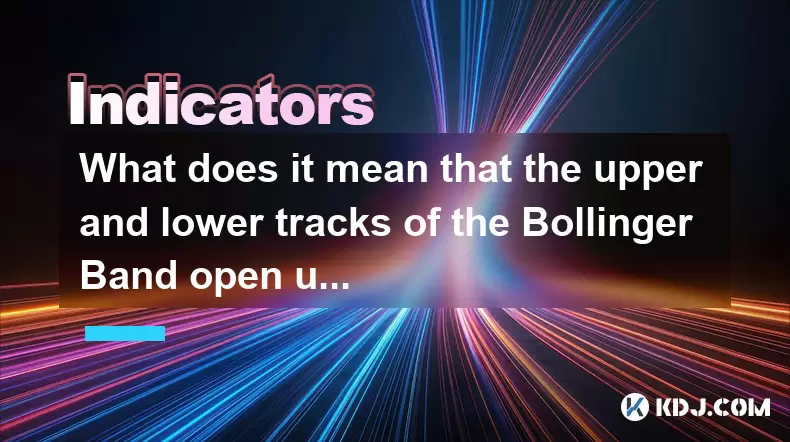
What does it mean that the upper and lower tracks of the Bollinger Band open upward at the same time?
Jul 27,2025 at 02:49pm
Understanding the Bollinger Band StructureThe Bollinger Band is a widely used technical analysis tool developed by John Bollinger. It consists of thre...
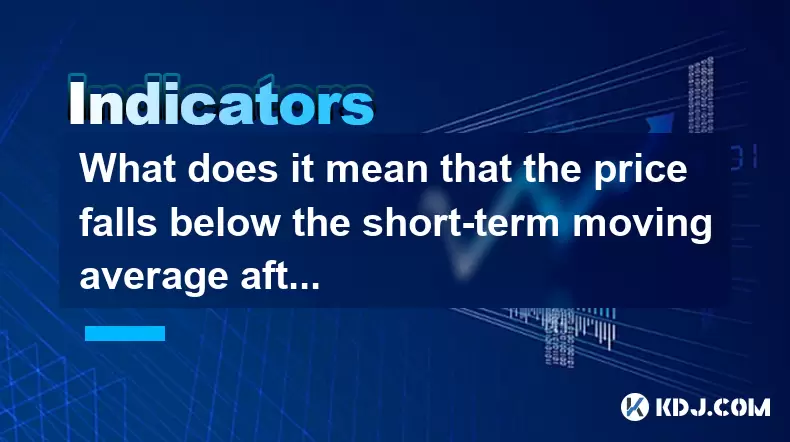
What does it mean that the price falls below the short-term moving average after the RSI top divergence?
Jul 26,2025 at 11:01pm
Understanding RSI Top Divergence in Cryptocurrency TradingThe Relative Strength Index (RSI) is a momentum oscillator widely used in cryptocurrency tra...
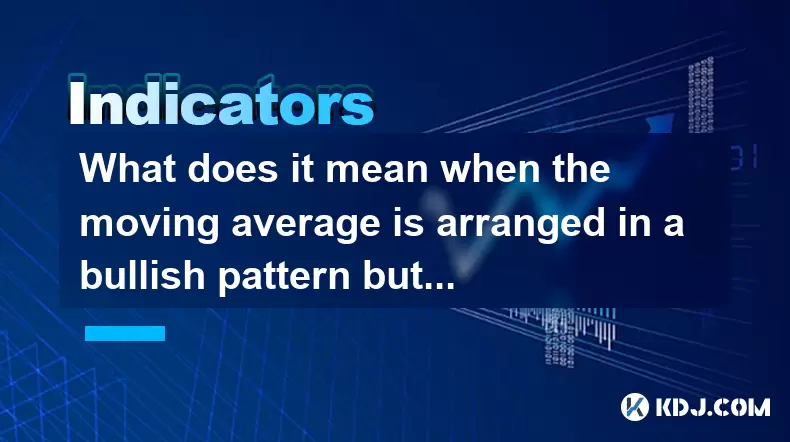
What does it mean when the moving average is arranged in a bullish pattern but the MACD bar is shortened?
Jul 27,2025 at 06:07am
Understanding the Bullish Moving Average PatternWhen traders observe a bullish moving average pattern, they typically refer to a configuration where s...

What signal does the ROC send when it rises rapidly from a low level and breaks through the zero axis?
Jul 27,2025 at 10:15am
Understanding the Rate of Change (ROC) IndicatorThe Rate of Change (ROC) is a momentum-based oscillator used in technical analysis to measure the perc...

What does it mean that the rebound is blocked after the moving average is arranged in a short position for the first time?
Jul 26,2025 at 10:51am
Understanding the Short-Term Moving Average ConfigurationWhen traders refer to a 'short position arrangement' in moving averages, they are describing ...

What does it mean that the parabolic indicator and the price break through the previous high at the same time?
Jul 26,2025 at 07:22pm
Understanding the Parabolic Indicator (SAR)The Parabolic SAR (Stop and Reverse) is a technical analysis tool developed by J. Welles Wilder to identify...

What does it mean that the upper and lower tracks of the Bollinger Band open upward at the same time?
Jul 27,2025 at 02:49pm
Understanding the Bollinger Band StructureThe Bollinger Band is a widely used technical analysis tool developed by John Bollinger. It consists of thre...

What does it mean that the price falls below the short-term moving average after the RSI top divergence?
Jul 26,2025 at 11:01pm
Understanding RSI Top Divergence in Cryptocurrency TradingThe Relative Strength Index (RSI) is a momentum oscillator widely used in cryptocurrency tra...

What does it mean when the moving average is arranged in a bullish pattern but the MACD bar is shortened?
Jul 27,2025 at 06:07am
Understanding the Bullish Moving Average PatternWhen traders observe a bullish moving average pattern, they typically refer to a configuration where s...
See all articles

























































































